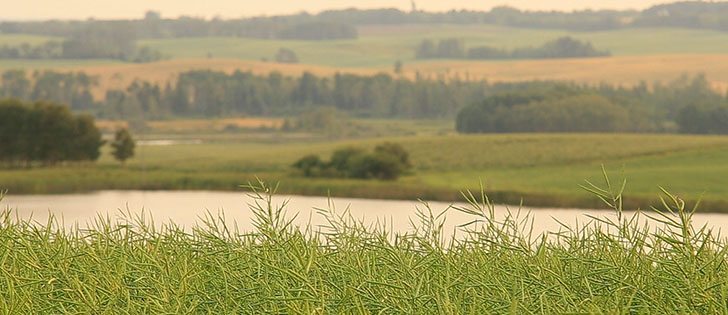Producers all have a ballpark number about how much fertilizer they will use on a given crop. Their wheat will get 70 pounds of actual nitrogen, 30 of phosphorus and 10 of sulfur. No potassium is applied at all in large parts of the Prairies, with the expectation that the soil is rich in potash.
Part one of the multi-part series Fertilizer Return on Investment.
Fertilizer won’t pay off without a plan
Producers have the financial wherewithal to take some chances with increased inputs when commodity prices are higher and margins can cover all the costs of farming.
These strategies pay off to a point: yields increase and with them margins.
However, at some point levels of nutrient application result in a yield curve that flattens out, and the return on investment ratio falls.
Determining that sweet spot before the rate of gain diminishes too much and the risk of loss becomes too great is governed by science. However, knowing how and where to apply that science is the art of farming well, say agronomists.
Rigas Karamanos has spent his career researching and advising producers in Western Canada about crop nutrition and soil fertility.
Read Also

Agritechnica Day 2: The future of tractor power, building quicker crop apps and large farms and tech
Agritechnica Day 2: The future of tractor power, building quicker crop apps with Syngenta and large farms and tech
“It all starts by knowing what you have: what your soil is capable of, what your genetics are capable of,” he said.
Karamanos, who is an agronomist with Koch Industries, said many producers tend to think about what they can live with when it comes to cost of production rather than what the crop can live with.
Jeff Schoenau of the University of Saskatchewan agreed.
The researcher feels producers should begin their crop planning by thinking about what they are building on and what it will take to produce big yields.
“If the goal is, and I am not saying you will all get there, 70 bushel (per acre) canola this year, have you considered what it will take, besides a lot of moisture?” he said.
“Canola will use 70 pounds of (nitrogen), 120 lb. of phosphorus, 180 lb. of potassium and 40 pounds of sulfur. You don’t have to put it all in with the crop, but that is what it needs to take out.”
Schoenau said producers can then begin to plan to maximize their yields, depending on what the soil has in it ahead of seeding time and what it is capable of supplying throughout the year from mineralization, release from previous crops and leftover fertilizer.
Karamanos feels most producers do “a pretty good job of replacing phosphorus” in most of their fields.
“But they do come up short in heavy canola or soybean rotations, where the crop is sensitive to those products and single pass operations can’t always allow (for full replacements). It might be worthwhile looking at their own recent cropping history to examine what has come out of their soils in recent years,” he said.
“We’ve had some historically huge crops in the past few years, and some huge rainfall and flooding. Can you tell me that you know what is out there in your fields? I think most can’t.… That is a base on which you can start to build a plan.”
Karamanos feels too many producers are still approaching their fertilizer strategy based on replacing what they think they removed from the field.
Recent research at the U of S has started to turn up high amounts of variability in long-term reduced tillage fields.
Schoenau said the old rules about sampling might not be as effective at determining what is really happening below the surface.
“There can be a lot of residual P in those old seed rows,” he said.
“We found as much variability in 100 centimetres (radius) as we did over an entire field.… We had to core 40 samples for P and 60 for N to get representative sample for the field.”
Researchers also discovered that fields using variable rate fertilizer systems had dramatically reduced variability when the same soil test criteria were applied.
Karamanos said not every field needs a soil test every year, but growers should plan for it regularly so that they can establish a baseline.
“The other thing they don’t often consider is the amount of moisture that is present in the soil,” he said.
“Not many can tell you what their reserves are and how much crop that will support. If you know what you have and can predict average amounts, you can plan a fertility strategy around it.”















